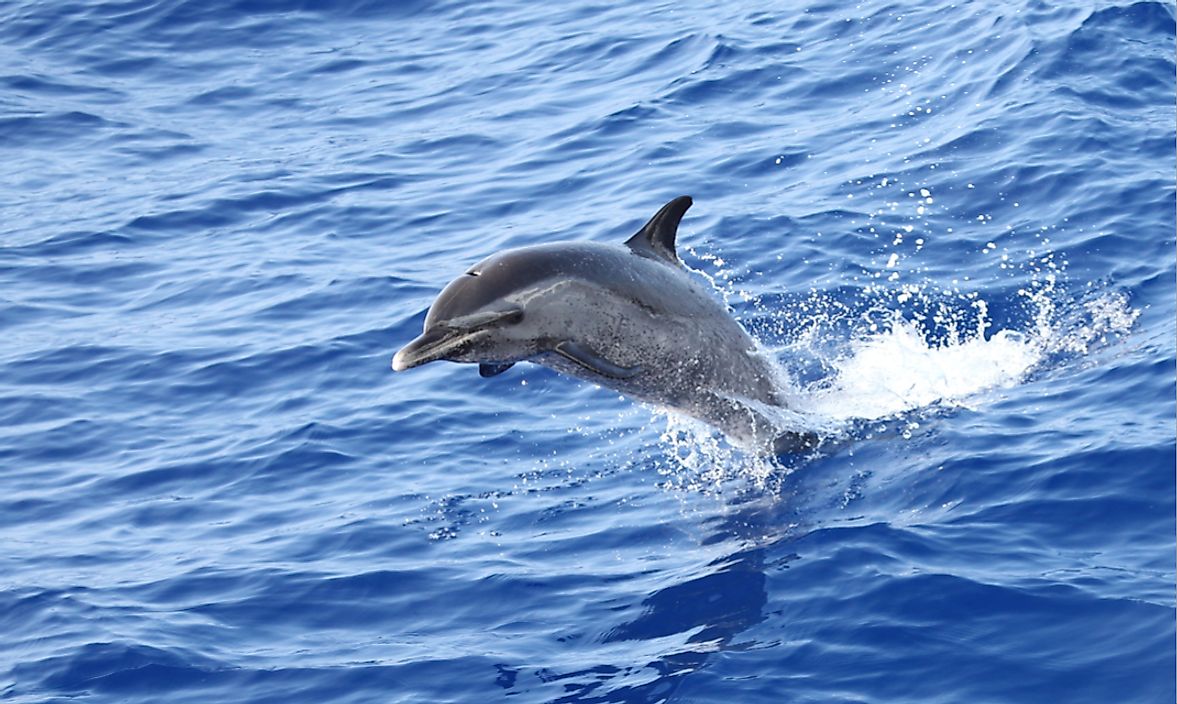What is the Difference Between a Dolphin and a Porpoise?

Although dolphins and porpoises are sometimes used interchangeably, many differences exist between them. Both of them are marine mammals, and they have lungs to enable them to breathe. The two marine animals give birth to their offspring whom they nurse. The differences between a dolphin and a porpoise are outlined below.
Differences In Physical Characteristics Between A Dolphin And A Porpoise
Several differences tell the two animals apart ranging from teeth, fins, size, and shapes. There are 40 known species of dolphin meaning there is greater diversity identified in dolphins compared to the six known porpoise species. Most dolphin species have streamlined bodies and two modified limbs which serve as flippers. Porpoises are portly and stockier compared to dolphins. The size of dolphins ranges from 5.6 ft to 31 ft. The largest of the dolphins is the killer whale. Porpoises on the other hand have a size of between 4.4 ft to 7.5 ft. Dolphins are recognized by their elongated mouths or beaks paired with cone-shaped teeth while porpoises sport smaller mouths with flattened, spade-shaped teeth. Most dolphin species have a curved dorsal fin which differs from the triangular one found in porpoises.
Behavioral Differences Between A Dolphin And A Porpoise
Dolphins communicate more than porpoises do by making whistling noises intended for each other. Dolphins are highly social and commune in pods of up to 12 dolphins. Pod sizes are not limited and differ between locations and species. Where there is abundant prey, for example, more than 1,000 individuals can converge to form superpods. Dolphins cultivate strong social bonds and even help injured or ill member. Porpoises live in small groups of two to four. These animals are relatively shy and are rarely sighted in pods. Porpoises species rarely make stable social associations but prefer temporary relationships. Dolphins are also more likely to interact with humans than porpoises.
Differences In Feeding Habits
Both animals feed on fish, crustaceans, and squid but some species of dolphins feed on other prey such as the killer whale which sometimes feeds on fellow marine mammals. The Orcas too preys on the occasional whale species.
Reproduction And Life Span In Dolphins And Porpoises
The gestation period for dolphins varies with species, but it is 11 to 17 months. The gestation period for porpoises lasts for almost one year. The two animals also differ in the lengths of their lifespans. Dolphin species live for 25 to 50 years in the wild while porpoises have a lifespan of 15 to 20 years.
Differences In Range
Dolphins inhabit a wider habitat since the species are more than those of the porpoise. The majority of dolphin species inhabit the warm waters in the tropic zones although several other species inhabit colder climates while porpoises prefer polar areas mostly near the coast. Although porpoises can dive to depths of 650 feet, they are mostly seen near the water’s surface.
Differences In Behavior In Captivitiy
Different dolphin species have been successfully kept in captivity. The animals are mostly kept in theme parks such as the SeaWorld marine mammal parks in the US. Dolphins have proven friendly and easy to train, and they also perform in shows. Porpoises on the other hand rarely thrive in captivity, and many of them die after a while. The animals are hard to train, and there are currently only five of them in captivity.











